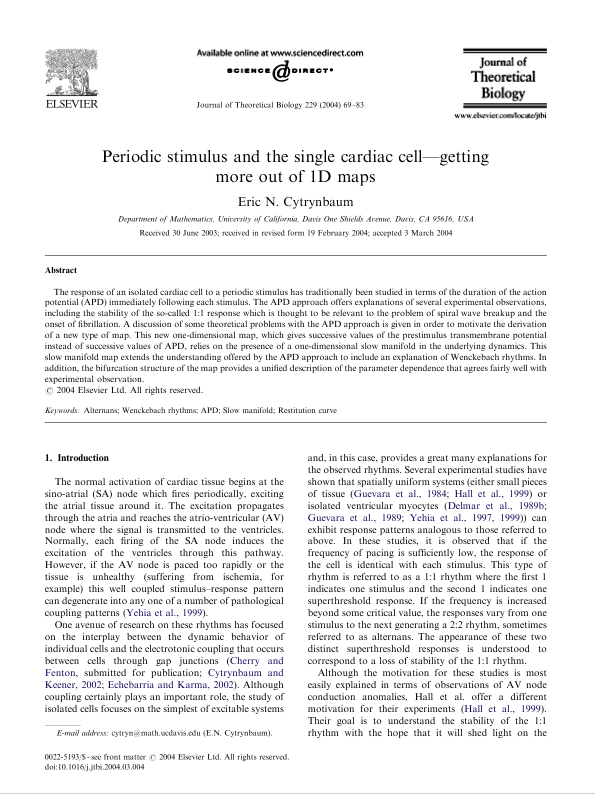Publications
| Abstract | The response of an isolated cardiac cell to a periodic stimulus has traditionally been studied in terms of the duration of the action potential (APD) immediately following each stimulus. The APD approach offers explanations of several experimental observations, including the stability of the so-called 1:1 response which is thought to be relevant to the problem of spiral wave breakup and the onset of fibrillation. A discussion of some theoretical problems with the APD approach is given in order to motivate the derivation of a new type of map. This new one-dimensional map, which gives successive values of the prestimulus transmembrane potential instead of successive values of APD, relies on the presence of a one-dimensional slow manifold in the underlying dynamics. This slow manifold map extends the understanding offered by the APD approach to include an explanation of Wenckebach rhythms. In addition, the bifurcation structure of the map provides a unified description of the parameter dependence that agrees fairly well with experimental observation. |
|---|---|
| A link to the paper |
 J Theor Biol, 229(1):69-83, 2004. |